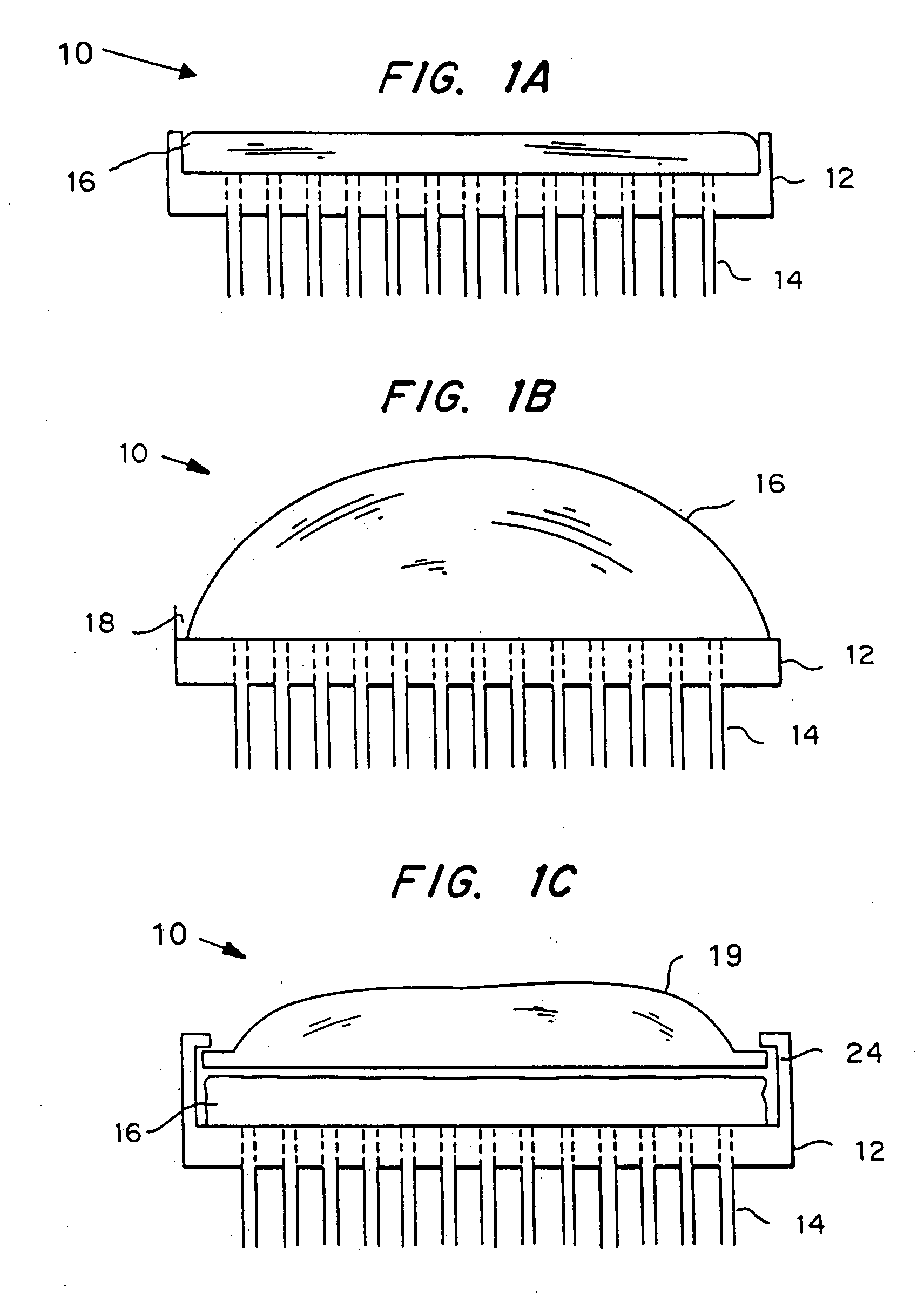Microneedle drug delivery device
a drug delivery and micro-needle technology, applied in the field of micro-needle drug delivery devices, can solve the problems of increased risk of disease transmission, inconvenient control of continuous drug delivery, and inconvenient use of drug delivery methods, etc., to achieve minimal or no damage, pain or irritation to the tissue
- Summary
- Abstract
- Description
- Claims
- Application Information
AI Technical Summary
Benefits of technology
Problems solved by technology
Method used
Image
Examples
examples
[0038] Preferred embodiments of the microneedle device are shown in FIGS. 1a-c. The device 10 includes substrate 12 from which a three-dimensional array of microneedles 14 protrude. As shown, the annular bore of the microneedles 14 extends through the substrate 12. The device 10 also includes a reservoir 16 secured to substrate 12 via a sealing mechanism 18. FIG. 1a shows how the reservoir can be accessed directly by application to the skin, for example, for simple transdermal delivery of an agent. The device in FIG. 1b includes a deformable bubble reservoir 16. Manual pressure can be used to expel its contents at the site of application. FIG. 1c shows a separate reservoir 16 from means 19 for expelling the contents of the reservoir 16 at the site of administration. The expelling means 19 can be simply a flexible bag. The expelling means 19 may also contain a vacuum so that it expands when vented, to create pressure on the reservoir, or it may be elastic so that it deforms when rele...
PUM
 Login to View More
Login to View More Abstract
Description
Claims
Application Information
 Login to View More
Login to View More - R&D
- Intellectual Property
- Life Sciences
- Materials
- Tech Scout
- Unparalleled Data Quality
- Higher Quality Content
- 60% Fewer Hallucinations
Browse by: Latest US Patents, China's latest patents, Technical Efficacy Thesaurus, Application Domain, Technology Topic, Popular Technical Reports.
© 2025 PatSnap. All rights reserved.Legal|Privacy policy|Modern Slavery Act Transparency Statement|Sitemap|About US| Contact US: help@patsnap.com



